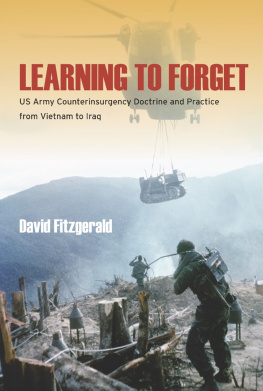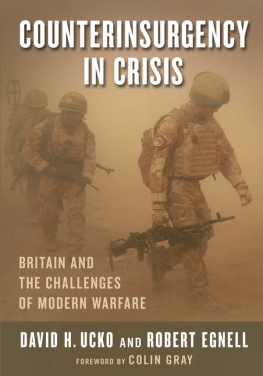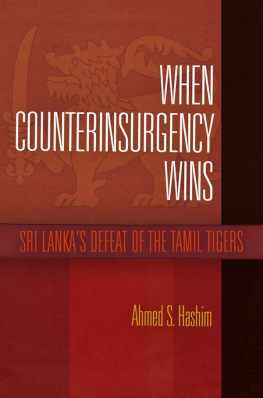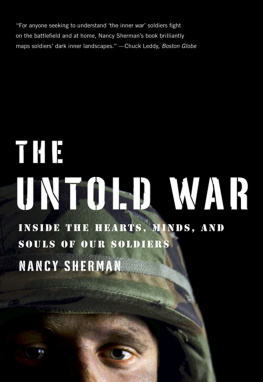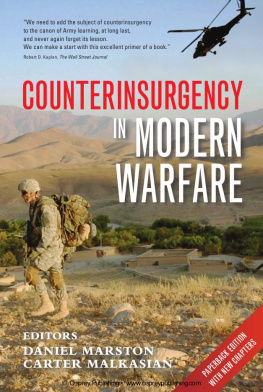HEARTS
AND MINDS
A Peoples History of
Counterinsurgency
Edited by
Hannah Gurman

NEW YORK
LONDON
Individual chapters 2013 by each author
All rights reserved.
No part of this book may be reproduced, in any form, without written permission from the publisher.
Requests for permission to reproduce selections from this book should be mailed to: Permissions Department, The New Press, 38 Greene Street, New York, NY 10013.
Published in the United States by The New Press, New York, 2013
Distributed by Perseus Distribution
LIBRARY OF CONGRESS CATALOGING-IN-PUBLICATION DATA
Hearts and minds : a peoples history of counterinsurgency / edited by Hannah Gurman.
pages cm
Includes bibliographical references and index.
ISBN 978-1-59558-843-2 (e-book)
1. CounterinsurgencyHistory20th centuryCase studies. 2. CounterinsurgencyHistory21st centuryCase studies. 3. CounterinsurgencyMalaysiaHistory20th century. 4. CounterinsurgencyPhilippinesHistory20th century. 5. CounterinsurgencyVietnamHistory20th century. 6. CounterinsurgencyEl SalvadorHistory20th century. 7. CounterinsurgencyIraqHistory21st century. 8. CounterinsurgencyAfghanistanHistory21st century. I. Gurman, Hannah, editor.
U241.H43 2013
355.02'1809dc23
2013010661
The New Press publishes books that promote and enrich public discussion and understanding of the issues vital to our democracy and to a more equitable world. These books are made possible by the enthusiasm of our readers; the support of a committed group of donors, large and small; the collaboration of our many partners in the independent media and the not-for-profit sector; booksellers, who often hand-sell New Press books; librarians; and above all by our authors.
www.thenewpress.com
Composition by dix!
This book was set in Scala
10 9 8 7 6 5 4 3 2 1
Hannah Gurman is a clinical assistant professor at NYUs Gallatin School of Individualized Study, where she teaches U.S. history and literature, with a focus on the United States in the world. Her work has appeared in Diplomatic History and the Journal of Contemporary History, as well as Salon, the Huffington Post, and Small Wars Journal. She is the author of The Dissent Papers: The Voices of Diplomats in the Cold War and Beyond (Columbia University Press, 2012) and a columnist for the Institute for Policy Studies website Foreign Policy in Focus. She lives in New York City.
CONTENTS
Hannah Gurman
Karl Hack
Vina A. Lanzona
Hannah Gurman
Joaqun M. Chvez
Rick Rowley
David Enders
Jeremy Kuzmarov
Jean MacKenzie
Edited volumes are by nature collaborative. Collaboration played a special role in this project, which was premised on the idea that a peoples history of counterinsurgency should avoid resurrecting a simplistic grand narrative and should instead bring together more nuanced perspectives from individuals with expertise in particular areas of the world. Rather than merely reflecting a compilation of individuals prior knowledge, however, this project became the basis for a valuable exchange of ideas, including debates about the purpose and possibility of writing a peoples history of counterinsurgency. This dialogue served to deepen the individual chapters of the book and strengthened the volume as a whole. I am grateful to the contributing authors for their work and for their enthusiastic participation in this joint effort.
A conference at New York University in September 2011 provided an ideal forum to share ideas and examine the history, theory, and practice of counterinsurgency with each other as well as with other scholars, military experts, and the public. I would like to thank NYUs Gallatin School of Individualized Study, and especially Dean Susanne Wofford, for supporting the conference and Jassica Bouvier, Theresa Anderson, and Rachel Plutzer for helping me to organize the event. I would also like to thank the conference participants, including John Allison, Clint Ancker, Conrad Crane, Lloyd Gardner, Gian Gentile, Roberto Gonzalez, Bill Hartung, Vince Rafael, Dahlia Wasfi, and Marilyn Young. In May 2010, Rich Kiper and Colonel Dan Roper at the U.S. Army Counterinsurgency Center and Dan Marston at the U.S. Army Command and Staff College at Fort Leavenworth spoke candidly and openly with me about counterinsurgency and were instrumental in deepening my knowledge of how COIN was being debated within U.S. military circles.
This volume is also the product of a collaborative editing effort. I am grateful to Marc Favreau for taking this project on, supporting it throughout, and joining in the intellectual exchange. Thanks as well to Nick Turse, who played a big role in getting the project off the ground and whose masterly editing skills strengthened several chapters of this volume. My research assistant extraordinaire, Jassica Bouvier, provided invaluable editing and organizational assistance in the later stages and was key in bringing the book to fruition. Thanks to Lloyd Gardner and Marilyn Young for their contributions at the authors workshop and for reading parts of this manuscript. They are the bereditors of this volume.
Hannah Gurman
HEARTS
AND MINDS
From the suppression of Native American rebellions in the nineteenth century to the post-9/11 attempts to crush anti-American insurgencies as part of the Global War on Terror, U.S. counterinsurgency warfare has gone through many incarnations. The most recent age of counterinsurgency
Counterinsurgency, or COIN, had been making a comeback over the course of the last several years. In 2007, faced with mounting chaos in Iraq, a desperate George W. Bush grasped for a new strategy in the war. General David Petraeus was prepared for such a moment. For decades, he had been angling to bring counterinsurgency back from the ashes of Vietnam. The previous year, as head of the armys Command and Staff College in Fort Leavenworth, he directed the writing of the U.S. Army/Marine Counterinsurgency Field Manual (FM 3-24). The guide, which garnered critical acclaim and held a spot on Amazons Top 100 list in 2007, announced the arrival of an age of internal or irregular wars in which militarily weak insurgents used political persuasion as well as force to threaten government power.
In these conflicts, the manuals authorsa group of military intellectuals and bureaucratsexplained that success would not be determined by military might alone but instead by winning the hearts and minds of the people: At its core, counterinsurgency is a struggle for the populations support. To achieve this, COIN had to focus on the needs and interests of the civilian population, including security and the provision of basic government services, such as electricity, irrigation, and roads. Above all, counterinsurgency forces would need to avoid civilian casualties.
Next page



